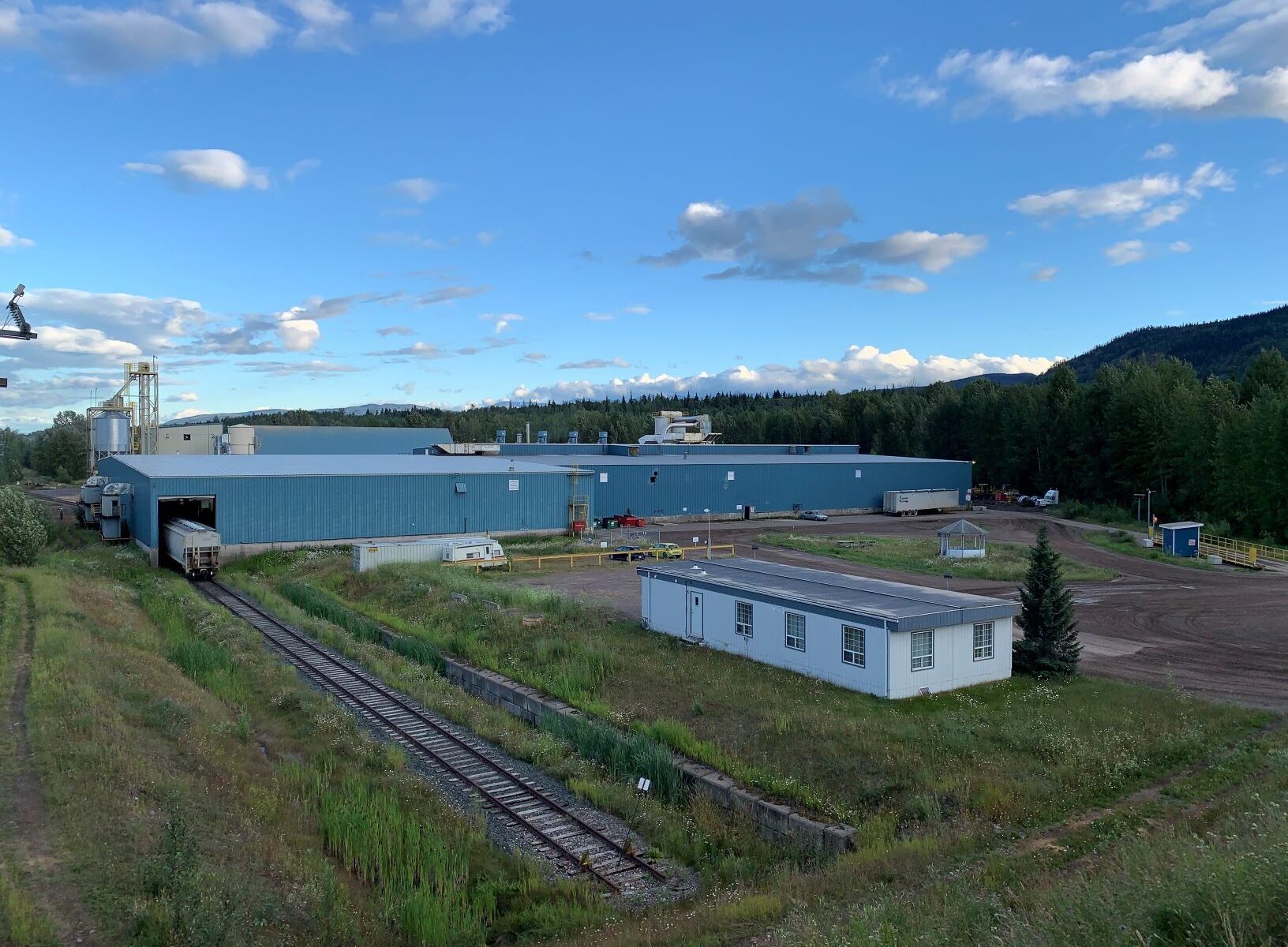Smithers is contributing to the achievement of Canada’s and B.C’s climate change targets by diverting residual fibre from the Bulkley Timber Supply Area that would otherwise be burned due to the uneconomic haul distance to Pinnacle Renewable Energy’s newly developed Smithers Pellet Facility. This is a good example of what the transition to green sustainable bioeconomy looks like.
$1.2 million in funding from the Forest Enhancement Society of BC (FESBC) helped to bridge haul costs, meaning the residual fibre is now being delivered to the pellet facility as raw material to create a marketable product, instead of being piled and burned in a cut block in the forest. As a result, air quality is better protected because incineration of biomass is cleaner than open burning of wood piles, Pinnacle Renewable Energy’s customers are able to reduce their overall fossil fuel consumption, all the while creating family-supporting jobs.
“In recent years in the Bulkley Valley, there has been no feasible end destination for any pulp-logs or bio-logs , forcing licensees to burn high amounts of fibre that could have been used to produce energy,” said Josh McQuillin, Superintendent of Biomass, Pinnacle Renewable Energy. “Through this funding we were able to utilize nearly 90,000 cubic metres of fibre that would otherwise have been piled and burned.”
Pinnacle Renewable Energy has a log supply agreement with Pacific Inland Resources, a division of West Fraser and partners with them to recover residual material left behind after timber harvesting within West Fraser’s license area.
“Harvest residuals can add challenges where the logistics costs of transporting fibre from cut blocks to our plant are difficult, or where storage space is limited, as is the case with Smithers,” said Jason Fisher, Vice President Fibre, Pinnacle Renewable Energy. “We know that by turning harvest residuals into pellets we are putting the carbon in that fibre to good use.”
Pinnacle Renewable Energy applied for FESBC funding to help offset any incremental haul costs associated with hauling fibre from greater than five hours away, allowing for the recovery and utilization of fibre that would otherwise not be economically feasible.
“FESBC funding enables Pinnacle to utilize fibre otherwise too expensive to haul to their facility which helps Pinnacle reduce greenhouse gas emissions by avoiding the burning of that residual fibre,” said Gord Pratt, RPF, Operations Manager, FESBC. “We are pleased to support Pinnacle in reducing those emissions.”
Fisher said Pinnacle Renewable Energy recognizes the importance of reducing carbon emissions.
“Our customers buy our pellets to reduce their carbon emissions. FESBC funding allowed us to achieve that goal through enhanced fibre utilization,” said Fisher. “FESBC support turns into local benefits and helps us turn BC harvest residuals into a global carbon solution.”
McQuillin said additional community benefits include improved local air quality and employment opportunities for local contractors. The funding allowed Pinnacle Renewable Energy to find longer-term storage for a surge of fibre supply, resulting in employment continuity.
“We were able to divert fibre being produced by local contractors to an offsite storage facility where it was stored and then hauled to a pellet plant over break-up,” said McQuillin. “Without FESBC, our fibre supply needs in both Burns Lake and Smithers were challenged. Initiatives such as this help balance fibre needs as well as create and sustain several local jobs.”
This project is funded in part by the Government of Canada.
To find projects in your area, visit the FESBC projects pages: www.fesbc.ca/projects
For more information or to arrange interviews:
Aleece Laird, Communications Liaison
Forest Enhancement Society of BC
communications@fesbc.ca | 250.574.0221

